
Citrus U-Pick Orchards in Baton Rouge area of Louisiana in 2025, by county
Below are the U-Pick orchards and farms for citrus that we know of in this area.
Not all areas of a state have citrus orchards that are open to the public. If you know of any others, please tell us using the add a farm form!
Remember to always check with the farm's own website or Facebook page before you go - or call or email them if they don't have a website or Facebook page. Conditions at the farms and crops can change literally overnight, so if you want to avoid a wasted trip out there - check with the farm directly before you go! If I cannot reach them, I DON'T GO!
PLEASE report closed farms, broken links and incorrect info using the "Report Corrections" form below.
New! As inflation remains high, see this page for
reliable (tested) brands of generic canning lids at lower
costs, and cost-saving measures for
getting fruit and vegetables and home canning.
If you are having a hard time
finding canning lids, I've used these, and they're a great price & ship in 2 days.
New! Road tripping and camping is a great way to have a fun, safe and inexpensive family trip. The national and state parks and monuments are open, and campgrounds usually cost between $10 and $40 per night. September to November is the best camping weather. See our new website Road Tripping and Camping.com for tips, tricks, guides, checklists and info about parks, monuments and other places to visit.
New! We just went live with our latest website, FunFactoryTours.com - As they name implies, you can find a fun factory tour, including chocolate, automobiles, historical forts and sites, famous buildings, Active Federal facilities even fun geology: like fossils and volcanic areas
Iberia Parish
- Daniel and Anna's Orchard - blackberries, blueberries, figs, lemons, oranges, satsumas, other citrus, pears, peaches, pecans , persimmons, strawberries, school tours
5116 Freetown Road, New Iberia, LA 70560. Phone: 337-365-1690. Email: sbeclaf@aol.com. Open: Note in 2021, you need to make an appointment before coming, Monday to Sunday 8am to 5pm except Thursday 1pm to 5pm. Directions: From Lafayette, Louisiana go south on Highway 90 to Highway 88. Exit on Highway 88, turn left to Frontage Road, turn right on Frontage Road to Freetown Road about 1 mile. Turn left on Freetown Road, go 1 mile to sharp curve to right, third house on left. Look for signs. Google or Yahoo will give correct directions, Mapquest will be wrong. . Click here for a map and directions. Payment: Cash, only. . Alternate Phone: 337-380-3795Fax: 337-332-6719 This is a Pick-your-own orchard with fruits grown throughout the year. Pick and purchase blueberries, peaches, cumquats, satsumas, persimmons, strawberries and others. Satsumas November 1 to January 15; Persimmons September 1 to November 10; Blueberries April 15 to June 10; Blackberries April 20 to June 10; Figs June 15 to July 20; Asian Pears July 20 to August 20; Peaches April 20 to June 20; Pecans October 1 to November 20; Strawberries April 15 to June 1bags and boxes are provided.
Citrus
Citrus Picking Tips, Recipes and Information
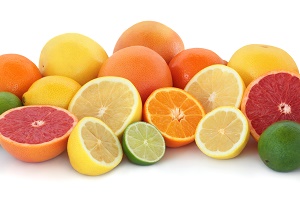 In
the U.S., Citrus such as oranges, lemons, grapefruit, mandarins, satsumas, tangerines and the like, typically peak during
winter and early Spring. See the season section for specific dates. It should be obvious that
citrus are only grown in semi-tropical areas on the country (like Florida, southern Texas, southern California, etc.). In order to produce good local
citrus, producers depend on ideal weather conditions, and no freezes.
In
the U.S., Citrus such as oranges, lemons, grapefruit, mandarins, satsumas, tangerines and the like, typically peak during
winter and early Spring. See the season section for specific dates. It should be obvious that
citrus are only grown in semi-tropical areas on the country (like Florida, southern Texas, southern California, etc.). In order to produce good local
citrus, producers depend on ideal weather conditions, and no freezes.
Before you leave to go to the farm:
- Always call before you go to the farm - Citrus are affected by weather (both rain and cooler temperature) more than most crops. And when they are in season, a large turnout can pick a field clean before noon, so CALL first!
- Leave early. On weekends, then fields may be picked clean by NOON!
- Most growers furnish picking containers designed for citrus, but they may charge you for them; be sure to call before you go to see if you need to bring containers. Plastic dishpans, metal oven pans with 3 inch tall sides and large pots make good containers.
- Bring something to drink and a few snacks; you'd be surprised how you can work up a thirst and appetite! And don't forget hats and sunscreen for the sun. Bugs usually aren't a problem, but some deet might be good to bring along if it has been rainy.
Citrus Picking tips: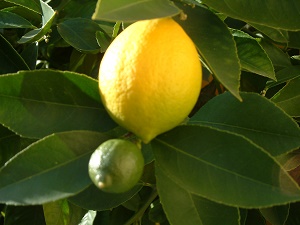
Most modern orange, grapefruit, mandarin or tangerine orchards have dwarf trees that are very close to the ground - my 3 year old finds it easy to pick citrus! (photo above and below)
The color can be anything from dark green, to yellow, pink, orange, bright red, dark red or even a combination. It all depends on the variety. And color is not really how you tell when a citrus fruit is ripe. The key will be to ask the farmer which are ripe.
-
Look for firm, bruise-free skin/peel/rind
-
Look for a heavy, solid feel to the fruit. heavier and more solid means juicier!
-
The dimples should have small, fine dimples on the peels
-
Watch out for soft, tender spots or wrinkled, folds in the rind.
-
The smell of the the fruit should be a strong, sweet citrusy smell.
The farmer/orchardist will also know what characteristics to look for in the particular varieties that he is growing.
When are citrus ripe - how to tell!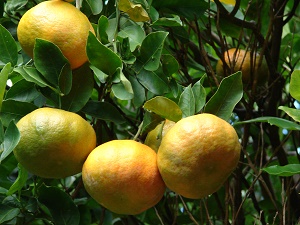
Citrus ripen from the outside of the tree towards the center, so the citrus out the outside of the tree will ripen first. Once they are picked, they stop ripening. Picking citrus directly from a tree is easy.. abut uniform orange color is not necessarily an indicator of a delicious, juicy orange. Notice the photo at right.
The best way to know if a citrus fruit is ripe is the smell and taste. Try one and you will know what to look for in appearance and smell with the others.
When are Citrus in season?
Keep in mind that these are typical, general dates. It can vary considerably upon weather, location, orchard and variety.
-
Navel oranges - November to June.
-
Valencia oranges - March to October.
-
Cara Cara oranges December to May.
-
Clementine oranges -October to December
-
Satsuma - October to January.
-
Pineapple sweet oranges - November to February.
More Tips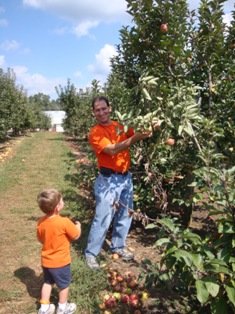
- Once picked, don't throw the citrus into the baskets, place them in gently, or they will bruise and go bad more quickly.
- Don't wash citrus until just before using to prevent spoilage.
-
Keep citrus cool after picking to increase shelf life. A cool
basement is ideal, but the fruit/vegetable drawer of a refrigerator will
work, too. Kept cool, fresh-picked citrus will generally keep weeks, but it
DOES depend on the variety. Red and Yellow Delicious citrus do not keep
well, for example; but Rome, do! High humidity helps to to keep the citrus
from shriveling, but don't let them get actually wet. A wet towel placed
nearby helps to keep the humidity up. A refrigerator is fine for small
quantities of citrus. Boxed citrus need to be kept in a cool, dark spot
where they won't freeze.
Prevent contact between citrus stored for the winter by wrapping them individually in sheets of newspaper. The easiest way to do this is to unfold a section of newspaper all the way and tear it into quarters. Then stack the wrapped citrus - Nutrition and miscellaneous facts: One-half cup of citrus is only 42 calories. Citrus contain no cholesterol or fat and are also low in calories. T Citrus are high in dietary fiber, Vitamin A and niacin. They contain iron and other trace minerals and are a fair source of Vitamin C.
- Citrus are ranked No. 1 in Vitamin C and antioxidant activity compared with many other commercially available fruits and vegetables. That means a serving of citrus has more of the antioxidant power you need to fight aging, cancer and heart disease.
Storing Citrus
In a refrigerator, citrus can last 2 or3 weeks.. Keep them in a bag that has holes for airflow, ie. they have a few holes in them . The airflow is important to prevent buildup of moisture or condensation which causes mold growth.
At room temperature, Citrus will keep for about a week.
Recipes and Preserving Citrus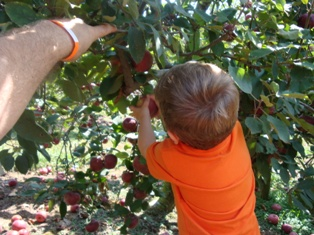
Canning and freezing citrus - fully illustrated, with step-by-step instructions
- How to can oranges, grapefruit, lemons, limes, tangerines, clementine's and other citrus
- How to make home-canned orange juice or other citrus juices
- How to make home-canned lemon juice or other citrus juices
- How to freeze orange, lemon, grapefruit or other citrus juices
Marmalades, Jellies, and Other Recipes, illustrated with step by step instructions
Citrus weights and measures
The weight of the citrus fruit, and the number of fruit per bushel varies depending on the size of the fruit , their moisture content and variety. But, in general:
-
1 bushel = 48-72 oranges or 32-48 grapefruit.
-
3/4 bushel = 36-54 oranges or 24-36 grapefruit
-
1/2 bushel = 24-36 oranges or 16-24 grapefruit
Citrus Festivals
Here is a list of Florida citrus festivals If you know of any more, please write me! Feedback.
Other Local Farm Products (Honey, Horses, Milk, Meat, Eggs, Etc.)
(NOT pick-your-own, unless they are also listed above)
- Farm markets and roadside stands
- Local Honey Finder
- Local Meat, Milk and Eggs
- Venues: Farms, Wineries, Orchards for your event, wedding or party
- Easter egg hunts
- Children"s consignment sales
- Fruit and vegetable festivals
- Winery tours and wine tastings
- Horse rides, stables, lessons, trails
- Maple Syrup farms and sugarworks
- Bed & Breakfasts on Farms, Wineries, Ranches and Orchards
- Pumpkin patches
- Corn mazes
- Zombie Paintball venues
- Christmas Tree Farms & lots
- Environmental resources
- Consumer fraud information
- Wholesale food sources
- Resources for Farmers
Looking for canning equipment and supplies?
Water bath canner with a jar rack
Pressure canners for gas, electric and induction stoves: Presto 23Qt or T-fal 22Qt
Canning scoop (this one is PERFECT)
Ball Blue book (most recent version)
Jars: 8oz canning jars for jams
Find Other types of farms:
Farm markets and roadside stands
Road trips and camping resources
Local Honey, apiaries, beekeepers
Consumer fraud and scams information
Home canning supplies at the best prices on the internet!
Maple Syrup Farms, sugarworks, maple syrup festivals
Environmental information and resources
Farms For Your Event for birthday parties, weddings, receptions, business meetings, retreats, etc.
Festivals - local fruit and vegetable festivals
Get the
most recent version of
the Ball Blue Book
With this Presto 23 quart pressure canner and pressure cooker, you can "can" everything, fruits, vegetables, jams, jellies, salsa, applesauce, pickles, even meats, soups, stews. Model 01781

You can make jams, jellies, can fruit, applesauce, salsa and pickles with water bath canners, like this Granite Ware 12-Piece Canner Kit, Jar Rack, Blancher, Colander and 5 piece Canning Tool Set

